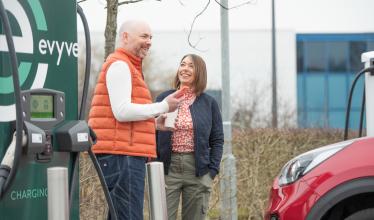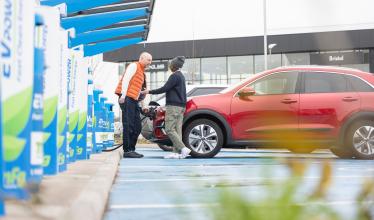2014 will mark the launch of the world’s first fully-electric racing series: Formula E.
The championship begins September 13th 2014 in Bejing, the first stop in a 10 race series being hosted in the heart of some of the globe’s best-known cities – including London, Los Angeles and Berlin.
Formula E, however, is being pitched as more than just another racing tour; it has been designed to help revolutionise the motor industry by affecting attitudes towards electric vehicles (EVs) and promoting sustainable transport. Furthermore, it is intended to serve as a framework for research and development around EVs, helping to advance the technology to a level where an electric future can be assured.
The way Formula E has been structured goes against the grain, ignoring traditions and guidelines motor racing has towed for over half a century, with Formula 1 at its helm.
Even small changes in Formula 1, such as new rules from the FIA to improve F1 vehicle’s fuel efficiency, have met criticism and resistance from fans, explaining why the sport struggles to evolve.
This new brand of racing seems to be driven to disregard taboos and attract an audience enthusiastic for something controversial and exciting. Moreover, Formula E hopes to succeed where F1 has failed, in instigating interest from the younger generation. They hope to make EVs sexy and relevant, in turn pushing electric transport into the mainstream, where it can lead battle on air pollution and climate change.
Formula E is striving to be at the forefront of electric innovation. Through a partnership with Qualcomm, they plan to integrate wireless charging into the races; one idea is to install a dynamic charging lane on selected straights. Apart from bringing further excitement to the competition, this will also help EV technology develop to where it can be incorporated into road cars.
A major difference to Formula 1 is that the cars are practically silent in comparison to conventional racing cars. This allows for in-city racing, as well as neat features such as music sounding to signify moments during the race. The start and finish, fan boosts, overtaking and even crashes will trumpeted with a unique soundtrack to add welcome drama to the spectacle.
“Crashes are a part of motor sport,” says Alejandro Agag, CEO of Formula E Holding. “But the music will be more sad for them.”
Sam Bird, one of Virgin Racing’s drivers, believes there will be a higher level of tension and excitement in Formula E: “The difference between a street circuit and conventional circuit is, if you make a mistake, you are in the barrier, not in a gravel trap or spinning onto extra tarmac.”
FIA Formula E Event Format

The 2014/2015 FIA Formula E Championship will consist of 10 rounds held on city-centre circuits’ around the world. Each round will take place over the course of a one-day event, comprising of practice, qualifying and the race, in order to minimise costs and disruption to the host city. Each team has two drivers who will amass points, individually and for their teams, to determine who the crowned victors are at the end of the season.
The Race
After a one hour practice and a 90 minute qualifying session, the race will be started and last for an estimated one hour. All twenty drivers, two per team, must take a mandatory pit stop, where drivers will change cars in contrast to engaging the refueling process accustom in F1. Importantly, the electric vehicles are pre-charged using renewably fueled electricity.
Perhaps the most controversial feature of the new racing series is the “fan boost” or, as Formula E has labeled it, “Push-to-Pass”. This allows fans to give their three favorite drivers a 2.5 second ‘power boost’ (increasing the vehicles power from 133kW/180bhp to 200kW/270bhp) during the course of the race.
Fans can vote online or using social media right up until the day of the race to ensure they’re pick gets an extra portion of speed.
The zero-emissions race series has already sparked interest from a number of high profile investors such as Leonardo DiCapiro and major car manufacturers Audi, Renault, and Mahindra. It has also received backing from racing legends Alain Prost, Sir Frank Williams and Emerson Fittipaldi, who brandished the championship as a “new era for motor racing”.
Sales of electric cars so far, although still rising, have been lower than expected. This is especially pertinent in China who has been relentlessly offering incentives to encourage the switch to EVs.
Steven Lu, CEO of the China Racing Formula E team, says: “It is very important to get more electric cars on the streets of Chinese cities. Beijing went from having 800,000 to 6.5m cars in 10 years and there is a lot of pollution in China and in cities around the world. The problem for electric cars in China is that people think the safety, reliability and range is not so good. But people will think that if they can race, they are safe.”
For more information, go to the FIA Formula E website.
FIA Formula E, The Guardian



